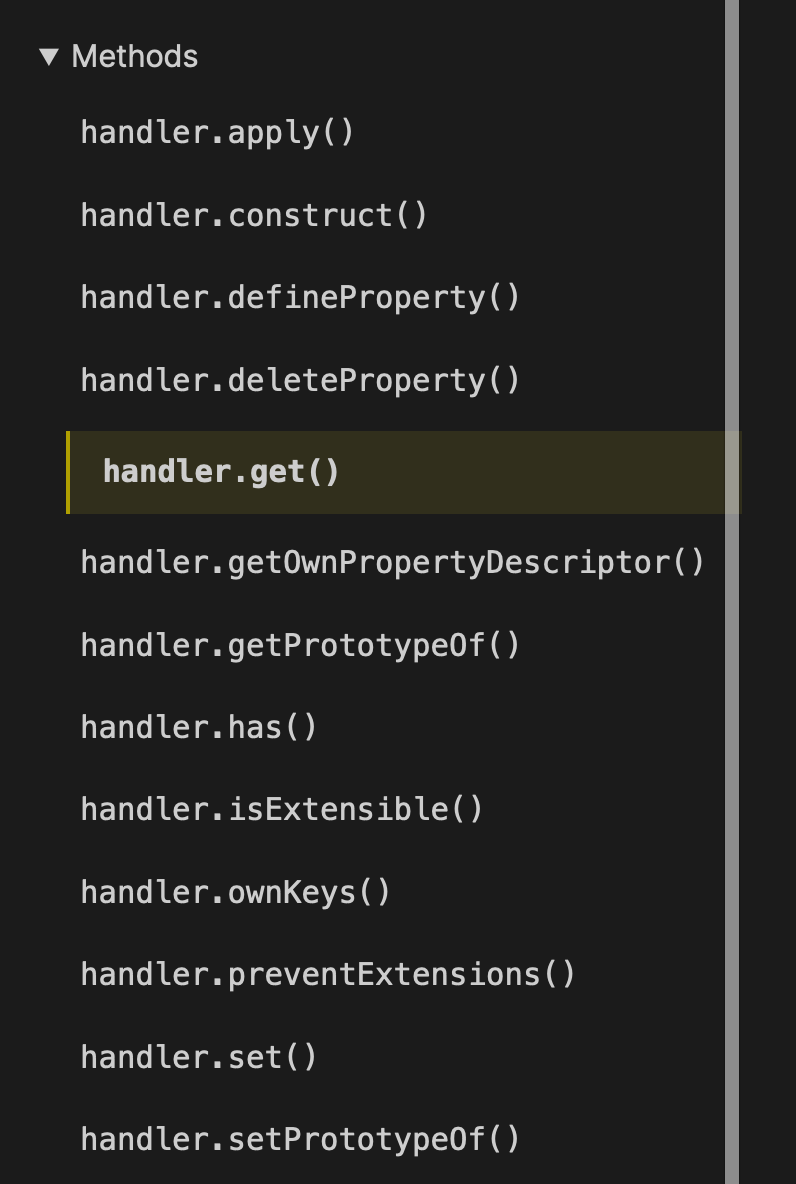Automatic reactivity with Vanilla JavaScript with two methods — Getters and Setters and JavaScript Proxies
One thing I really loved about Svelte is their reactive statements — you can simply just change a value and the UI gets updated accordingly.
<script> let show = false
function toggle() { show = !show }</script>
<button on:click={toggle}>Toggle content</button>
{#if show} <div>Hello World!</div>{/if}Going deeper, Svelte also has a $ syntax that hooks up its reactivity with Vanilla JavaScript so you can update a value whenever another value changes.
<script> let count = 0
$: double = count * 2
function increase() { count += 1 }</script>
<button on:click={increase}>Add count</button><div>Doubled Count: {double}</div>When I discovered how to use these feature properly, I got hooked. Then I wondered if it’s possible to do something similar with Vanilla JavaScript.
Turns out, it’s possible! You can do it with two methods:
- Getters and Setters
- Proxies
Proxies are the superior method here because there’s less code to scaffold. But it may take a little bit more head-wrangling to get used to.
Without further ado, let’s see how to use both methods.
Reactivity with Getters and Setters
Getters and Setters let you do something before a property is accessed (when getting) or changed (when setting).
I assume you have some knowledge about Getters and Setters in this article. If this concept is new to you, you might want to check out this article where I go into more detail.
If we put Getters and Setters into a context of showing or hiding an element based on a show state, we can write code similar to the following:
function createState() { let _show = false
return { get show() { return _show }, set show(value) { _show = value
if (_show === true) open() if (_show === false) close() }, }}
// Using this functionconst state = createState()state.show = true // This runs the `open` functionstate.show = false // This runs the `close` functionIn this case…
- When
state.showis set totrue, we’ll run anopenfunction that does whatever the component needs to “open”. - When
state.showis set tofalse, we’ll run aclosefunction that does whatever the component needs to “close”.
This looks pretty cool — but there are two downsides:
- You need a
createStatefunction to create the state object — this is unnecessary boilerplate code in my opinion. - Each tracked state requires a private variable, which can get complex and unwieldy as the size of the application increases.
We can mitigate both downsides with JavaScript Proxies.
Reactivity with JavaScript Proxies
JavaScript Proxies function in a similar way compared to Getters and Setters — the only difference is you don’t have to create a wrapper function around it.
Here’s the same code from above but with Proxies.
let state = { show = false}
state = new Proxy(state, { get(target, prop) { return Reflect.get(...arguments) },
set(target, prop) { Reflect.set(...arguments)
if (prop === 'show') { const value = target[prop] if (value === true) open() if (value === false) close() }
return true },})
// Using thisstate.show = true // This runs the `open` functionstate.show = false // This runs the `close` functionThere’s a lot going on so let me break down what’s happening.
Understanding the Proxy code
First, proxies take in two values — a proxied object and a handler object.
const proxied = new Proxy(targetObject, handler)In this case, I reassigned the state variable because I didn’t need to keep the original state values. This makes the code a little bit cleaner since there are fewer variables.
let state = { show: false }state = new Proxy(state, handler)The handler object here allows you to define what happens when each property is accessed via get, set, and other methods.

In this case, I used Reflect for both get and set which basically tells the proxy to perform the original actions on the accessed values — just like if you get or set a property normally.
This is an important step — if you missed this then you’ll get an error with your proxies.
state = new Proxy(state, { get(target, prop) { return Reflect.get(...arguments) },
set(target, prop) { Reflect.set(...arguments) return true },})
// Getting the `show` valueconsole.log(state.show) // false
// Setting the `show` valuestate.show = trueconsole.log(state.show) // trueFun Fact: The get, set, and other methods in a Proxy are called traps. I
have no idea why they’re called traps but I think traps sounded a little too
sinister 🙃.
Finally, I tracked the show property and I used this to run open or close functions whenever its value changes.
state = new Proxy(state, { set(target, prop) { Reflect.set(...arguments)
if (prop === 'show') { const value = target[prop] if (value === true) open() if (value === false) close() }
return true },})Downsides of JavaScript Proxies
While researching to write this article, I found an article by Chris Ferdinandi that mentioned that Getters and Setters have better performance than proxies.
I haven’t had the chance to personally test this out yet so I can’t guarantee whether one outperforms another.
Personally, I think the performance difference is negligible in a real application.
That’s it!
Wrapping up
If you want to create reactivity in your applications with Vanilla JavaScript, you can use one of these two methods:
- Getters and Setters
- JavaScript proxies
Of the two, I believe proxies are superior because you can write terser code that contains less boilerplate (which ends up being easier to maintain).
What do you think? I’d love to hear what your thoughts are. And if you learned something new from this article, I’d love it if you shared that with me too! :)
If you enjoyed this article, you may also enjoy our programming courses — get 2-3 chapters of each of our courses for free here. (No email registration required).
